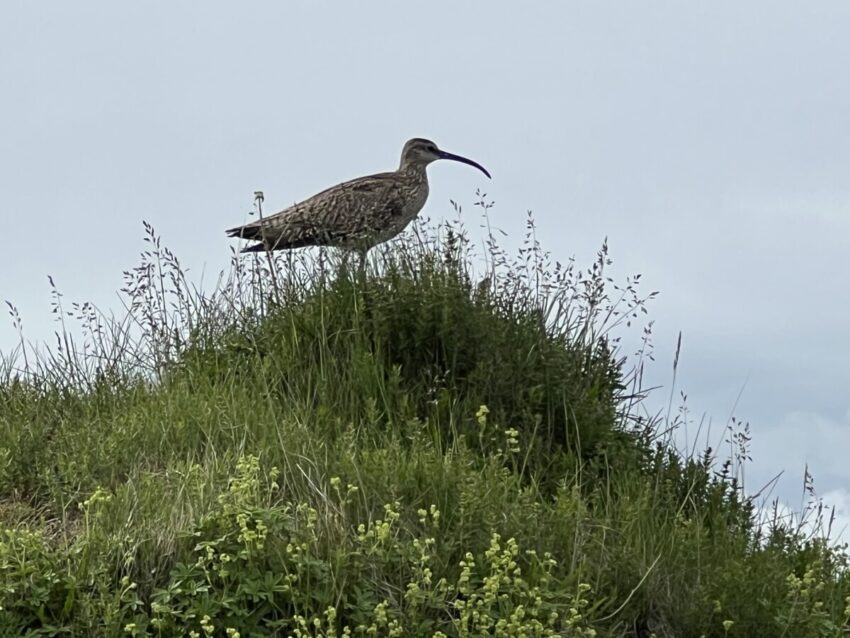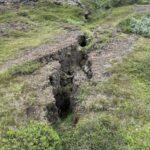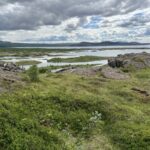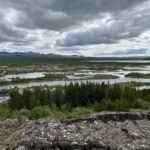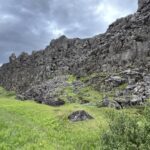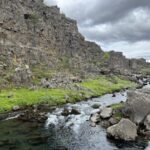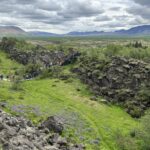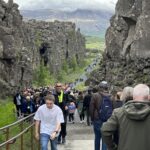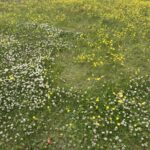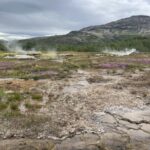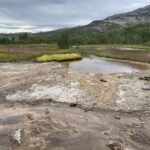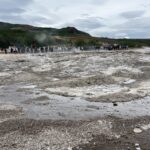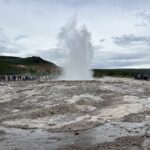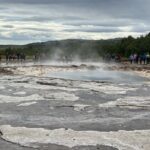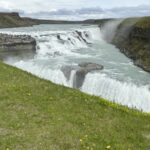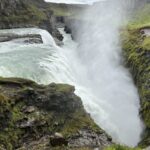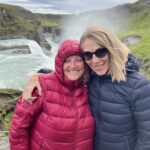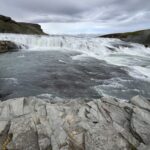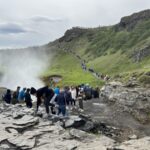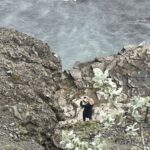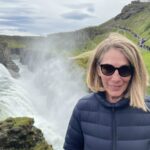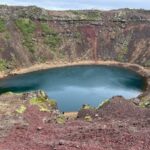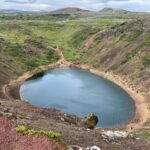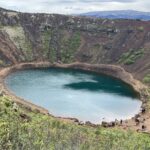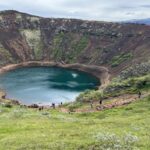After saying our farewells on board Seven Seas Splendour, Jan, Craig, Susie and myself headed to our hotel to deposit our luggage and meet Sally and Ross to commence our Golden Triangle tour of the area around Reykjavik. The Golden Circle is a tourist route in southern Iceland, covering about 300 kilometres looping from Reykjavík into the southern uplands of Iceland and back.
Our first stop was Thingvellir or Pingvellir National Park. The Þingvellir area is praised as the national shrine of Iceland due to its great historical and geological significance. Iceland’s first national park was established here in 1928, and the Þingvellir area has now been recognised for its outstanding universal value and listed as a UNESCO world heritage site.
Iceland is divided by the Mid-Atlantic Rift; some parts of it, such as the Westfjords and Reyjavík, are on the North American tectonic plate, while others, such as Vatnajökull glacier and the East Fjords, are on the Eurasian plate. Iceland is the only place in the world where this rift is above sea-level, and nowhere can you see the edges of both plates as clearly as in Þingvellir.
As we entered the park from Reykjavík, we descended a steep cliff into a valley. Looking upon the face of this cliff is to literally look at the edge of North America. As we drove through the park, we ascended on the other side adjacent to another wall; this is Eurasia. The valley in between, in which Þingvellir is contained, is the rift valley.
Then off to Haukadalur, which is a geothermal valley in South Iceland. It is home to hot springs, fumaroles, mud pots, and geysers, including the famous Great Geysir and the active Strokkur. The area is noted for the vivid coloration of its surrounding hills, caused by elements deep in the earth being brought to the surface by the geothermal activity.
Our third stop was the Gullfoss Falls. Gullfoss (translated to ‘Golden Falls’) is one of Iceland’s most iconic and beloved waterfalls, found in the Hvítá river canyon in Southwest Iceland. The water in Hvítá river travels from the glacier Langjökull, before cascading 32 meters (105 feet) down Gullfoss’ two stages in a dramatic display of nature’s raw power. Because of the waterfall’s two stages, Gullfoss should actually be thought of as two separate features. The first, shorter cascade is 11 meters tall (36 feet), whilst the second drop is 21 meters (69 feet). The canyon walls on both sides of the waterfall reach heights of up to 70 meters (230 feet), descending into the great Gullfossgjúfur canyon. Geologists believe that this canyon was formed by glacial outbursts at the beginning of the last age.
And our final stop for today was the beautiful Kerid Crater.
Kerið is approximately three thousand years old, making it roughly half the age of most volcanic calderas found in Iceland. This is the major reason as to why Kerið’s slopes are red in colour, rather than a volcanic black; the iron deposits are, geologically speaking, fresh.
This vivid redness is part of the appeal of visiting this crater. The crimson rocks contrast dramatically with their surroundings, particularly the intense azure colour of the waters within the crater lake, and the verdant bursts of vegetation.
Kerið is approximately 55 metres (180 feet) deep, 170 metres (558 feet) wide and 270 meters (886 feet) in circumference. We walked around the edge of the crater and admired the blue of the lake and the beautiful colours of the surrounding soil and rocks.
Such a history here in Iceland. Mystical, magical and full of folklore. A beautiful, bleak and serene country and well worth a visit. It is however cold!!!!

